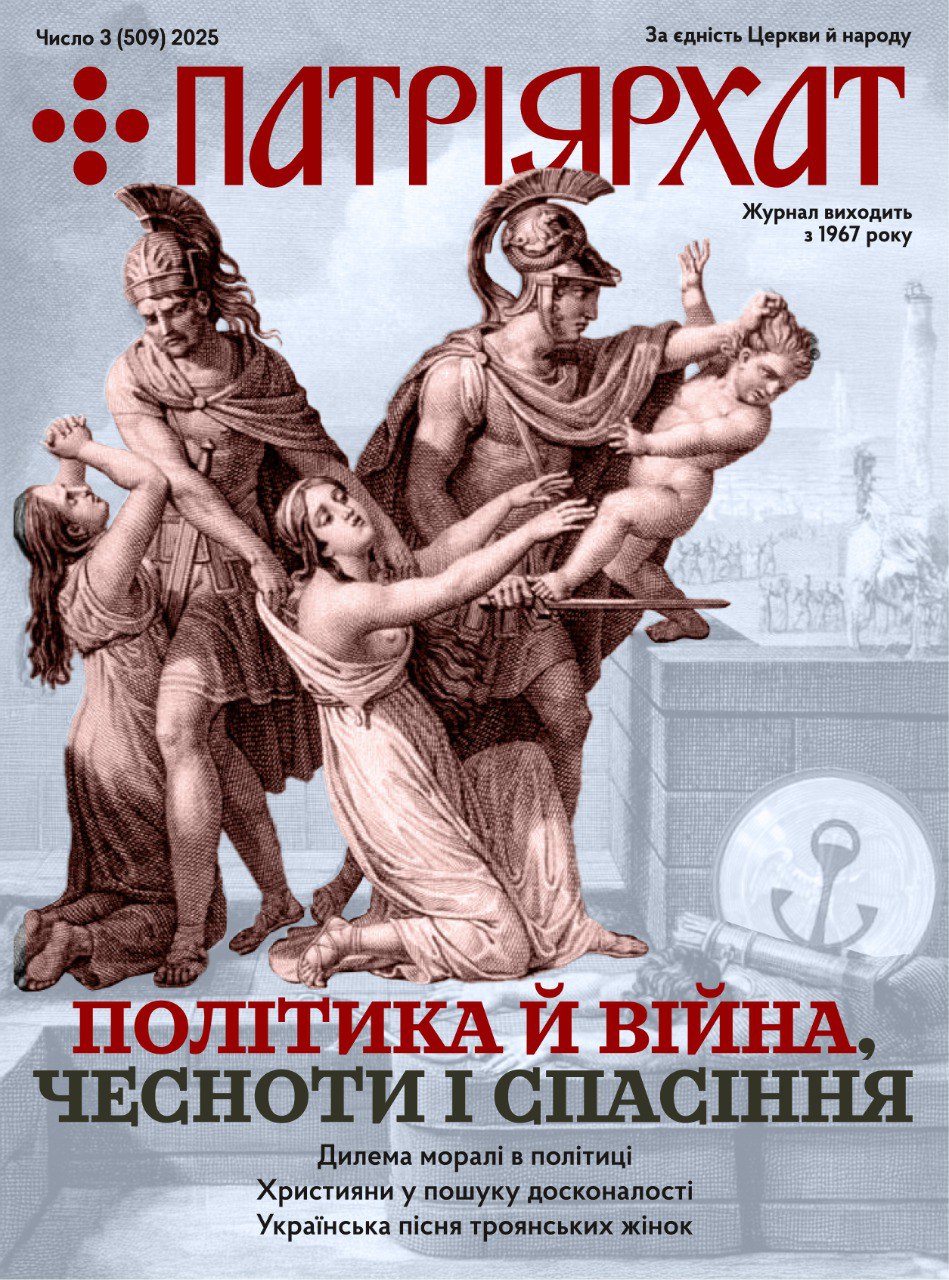Below is a reprint of an article about the historical Kiev Monastery of the Caves,
showing how on the one hand the Soviet Union misappropriates the heritage of Ukrainian religious culture for the Russian Church, and, on the other, — ruins and destroys it in order to eradicate Ukrainian historical identity. What are our Church and Scientific Organization doing in this respect?
Editor
Nationalization of the property of Russian Orthodox monasteries took place in Soviet Russia from 1917 to 1921. What seems to be the first book on the subject in the USSR contains information on the appropriation of monastery property for use as schools, hospitals, and convalescent homes, or by state farms.
A review of the book says that the information it provides «convincingly disproves the fantasies of White émigrés and bourgeois ‘sovietologists’ about the nationalization of monastery property in Soviet Russia as supposedly being a destructive action». Reports of the destruction of church property in the Soviet Union are not, however, just limited to accounts or conjecture in the West or to past events. No less a primary source of official information in the USSR than Pravda carried an article on-November 11, 1978, about the continuing deterioration and misuse of the Kiev Monastery of the Caves (Kievo-Pecherskaya Lavra) or what is now called the Kiev-Pecherksy State Reserve.
The Kiev Monastery of the Caves was founded under Yaroslav the Wise in 1051, or not long after Kievan Rus’ had been converted to Christianity. Crucial events in the history of ancient Rus’ were recorded in chronicles written at the monastery, among them Povest’ vremennykh let (Tale of Bygone Years) by Friar Nestor, who is often referred to as the first Russian chronicler and whose remains are reputedly buried in one of the caves. The remains of Yurii Dolgorukii, the founder of Moscow, are preserved on the monastery grounds in the Church of the Savior at Berestov. The Kiev Monastery of the Caves is one of the four Lavras of the Orthodox Church that existed in the prerevolutionary period, the other three being the Alexander Nevsky Monastery (Aleksandro-Nevskaya Lavra), the Trinity Monastery of St. Sergius (Troitse-Sergieva Lavra), and the Pochaev Monastery of the Assumption (Pochaevo-Uspenskaya Lavra). Of these, only the last two have survived as monasteries. The Alexander Nevsky Monastery has been closed, though there is still a seminary on its premises, as well as the residence of the Metropolitan of Leningrad.
The fate of the Kiev Monastery of the Cavers in the Soviet period was sealed by a resolution of the All-Ukrainian Central Executive Committee (VUTsIK) and the People’s Commissariat for the Ukraine adopted in 1926. At the time, it was decreed that the Lavra was to become a museum:
The grounds of the former Kievo-Pecherskaya Lavra, in the boundaries of its old and new walls, are declared to be a historical and cultural State Reserve, and the People’s Commissariat for Enlightenment is charged with the establishment on this site of and All-Ukrainian museum complex.
The monastery at the Lavra was closed in 1929. An article on the Kiev Monastery of the Caves that was written by two Ukrainian scholars and published in 1976 explains that in 1929 the monastery underwent «a serious crisis that finally led to its dissolution». What it fails to mention, however, is that in 1941, under the German occupation, a number of monks returned to the Lavra and reestablished monastic life there. This situation seems to have lasted without any disturbance until sometime towards the end of the 1950s. Then, in 1961, the same eighty monks who were by this time living at the monastery were driven away, and it was again closed, ostensibly for repairs. It has not been reopened since, but an Orthodox priest who recently emigrated from the Soviet Union reports that the Lavra’s monastic community still exists.
In 1977, at a press conference for foreign correspondents in Moscow, the members of the Christian Committee for the Defense of Believers in the USSR distributed a copy of an appeal made to Leonid Brezhnev by a group of former monks of the Kiev Monastery of the Caves. They requested permission for the historic monastery to be reopened. During the press conference, Father-Superior Akhilla, one of the twelve monks who signed the appeal, showed journalists a copy of a similar petition to the General Secretary of the CHSU signed by 186 Orthodox believers in Kiev.
Information in the Soviet press about the condition of the Kiev Monastery of the Caves is contradictory. The two Ukrainian scholars writing about the monastery in 1976 stated that over 2.6 million rubles had been spent on major restoration work between 1950 and 1960. They declared:
Questions of the renovation and the utilization of the reserve’s historical monuments in the interest of the Communist education of the workers have been at the center of attention of Party and soviet organs in the republic. This has made it possible to speed up and for the most part complete projected repair and restoration work.
Nonetheless, there are indications that the condition of the Kiev Monastery of the Caves is worsening at the present time. One of these is the article in Pravda of November 11, 1978, which, though it also speaks of substantial expenditures on upkeep, goes on to say that «the condition of the museum complex leaves, as they say, much to be desired». There are about one hundred buildings on the grounds of the Lavra, including forty that are of considerable historical interest as architectural monuments. The very organizations that are supposed to be restoring them are, it appears from the report in Pravda, allowing them to deteriorate. According to the article, there are no less than eight organizations charged with the responsibility for servicing the monastery, each acting independently of the others, with the result that work is carried out all too slowly and in a slipshod fashion. Most of the plans for maintenance and repair have, it is said, only remained on paper. To take an example, Pravda mentions a scheme to set up a permanent restoration unit at the monastery consisting of 80 to 100 trained workmen from the Ukrainian State Construction Agency (Gosstroi). It never materialized. Like a number of other projects for the monastery, it was left, as Pravda puts it, «hanging in the air».
Besides poor organization of work and neglected projects, there is too, the article in Pravda reveals, the problem of firms and agencies that have installed themselves as tenants on the gourds of the Lavra and are partly responsible for its deterioration. A republican institute for improving the qualifications of cultural workers has settled in five buildings on the monastery grounds and has recently taken over a sixth. A theater requisites factory, complete with facilities for making props, is scattering its rubbish everywhere, turning the hillsides of the monastery into a dump. Part of a footwear factory is trying to establish itself at the monastery, and an institute of contagious diseases and the cinematography department of a drama institute are resisting attempts to move them. The directors of the Society for the Preservation of Monuments, History, and Culture, who presumably are the persons responsible for the maintenance of places such as the Kiev Monastery of the Caves, «have rebuilt premises for workships in defiance of the regulations». Several organizations have set up garages in the Lavra. «Automobiles and heavy trucks roar and rattle around, filling the air with poisonous exhaust fumes». New garages are being built right next to ancient monuments. The courtyards of living quarters in the Lavra are choked with garbage, and resolutions to evict the occupants are not put into effect. But in addition to this passive destruction of a sacred place of the Russian Orthodox Church, Pravda points out, the museums in the Lavra are being stripped of their religious relics and other treasures. The article states that several cases of theft, «the result of disgraceful laxity and daydreaming», were recently brought to light. Though it is said that efforts have been made to tighten security at the monastery, Pravda nevertheless adds:
The alarm has been sounded about abuses taking place at the State Reserve, whose managers, taking advantage of a lack of control by the republican Ministry of Culture, have engaged in underhanded schemes with property.
The article in Pravda ends by reporting that a number of Party members in the Ukraine «have expressed serious concern over the state of affairs at the most noted museum center in the republic».
Oxana Antic

